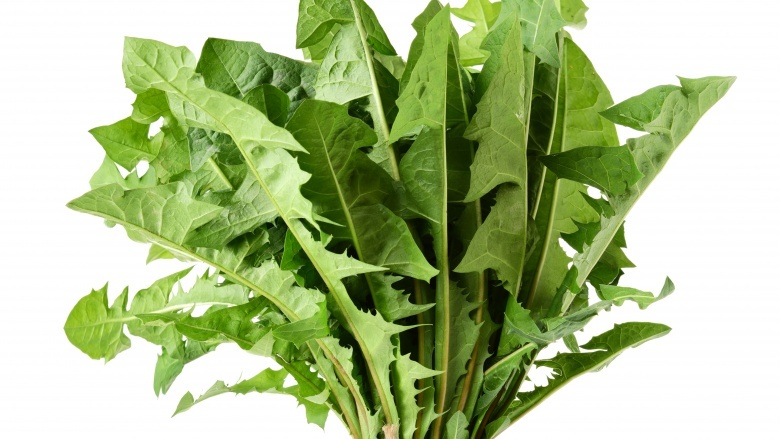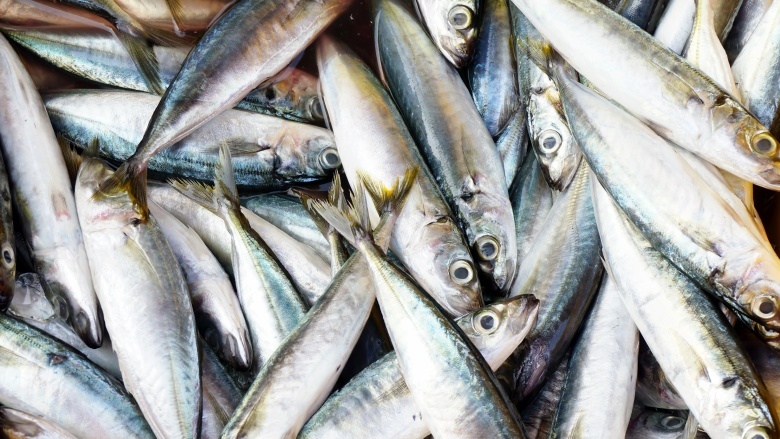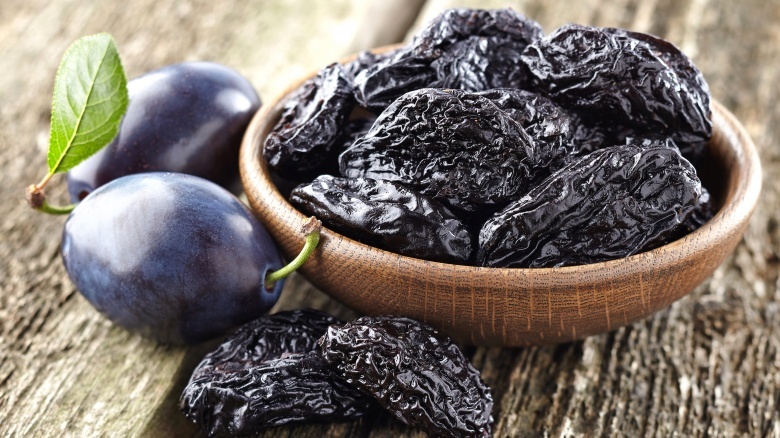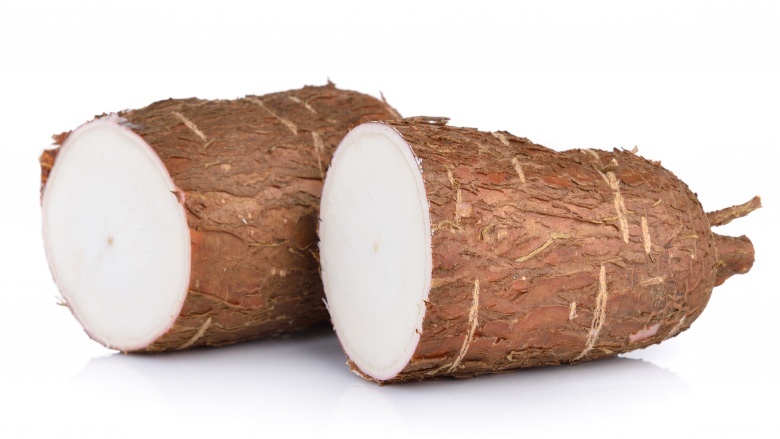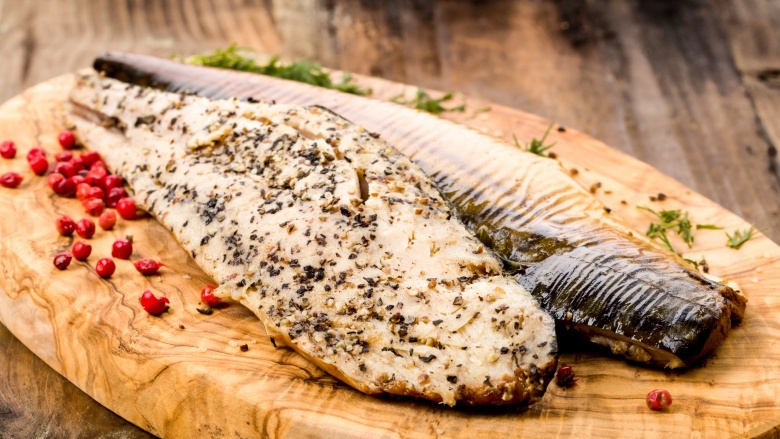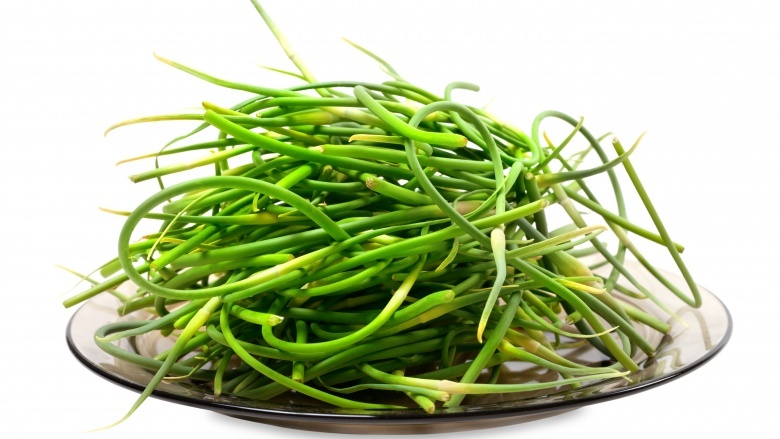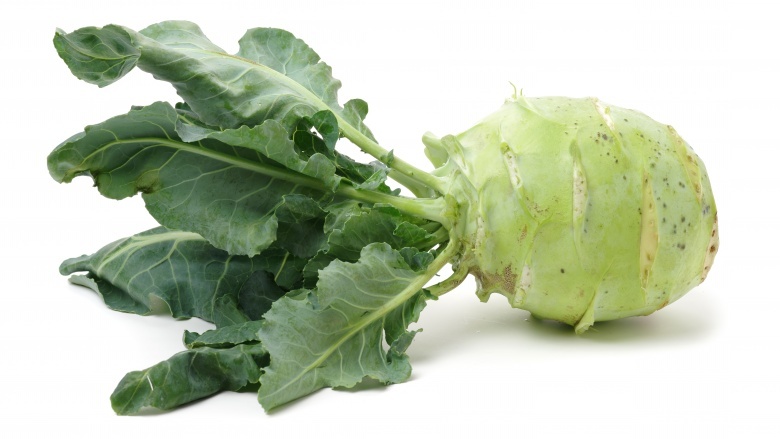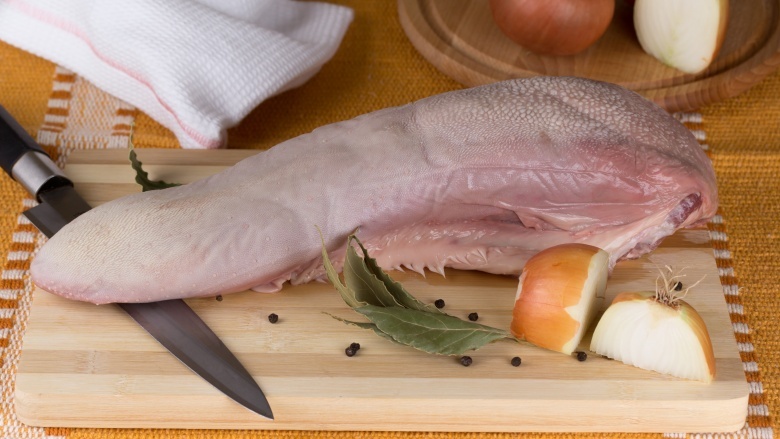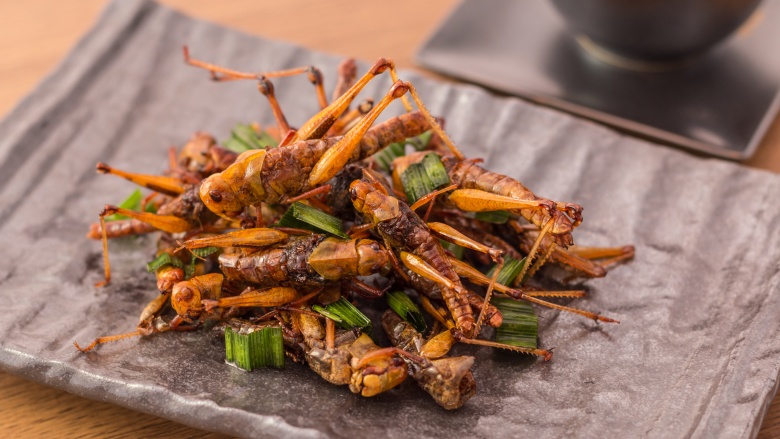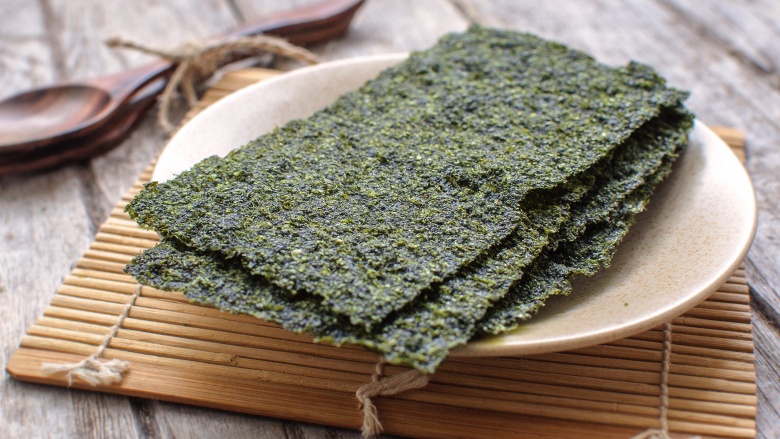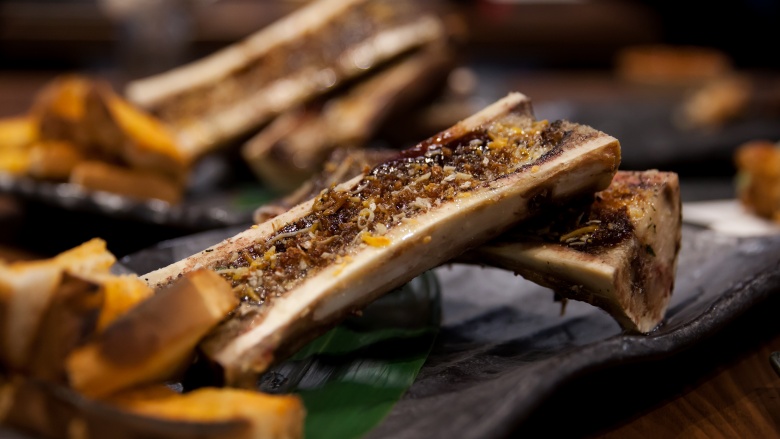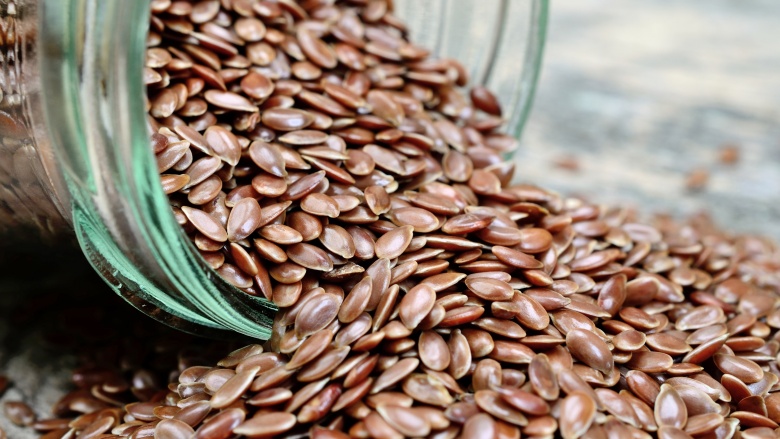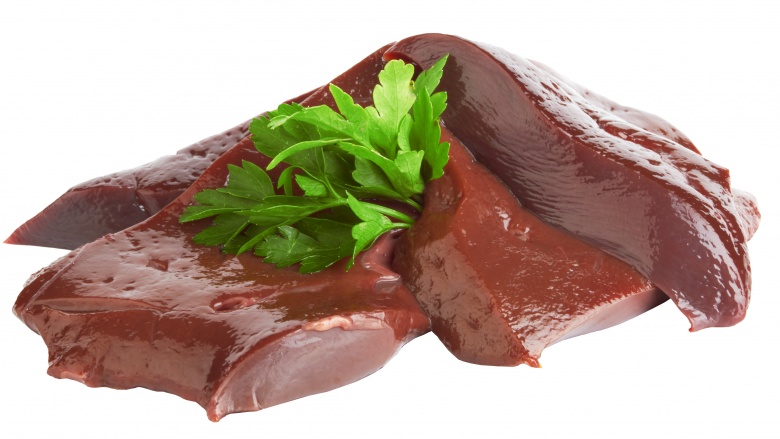Foods You Aren't Eating, But Should Be
If your life is like most, you're probably pretty busy. And with so little time on your hands, your eating habits have probably gotten fairly routine. The same cereal for breakfast, the same sandwich with cold cuts for lunch, and the same chicken something for dinner. It's not particularly exciting and it does the job of keeping you fed, but despite that, your easy routine is getting in the way. That's because no matter which modern Western city you happen to live in or near, you definitely have access to some pretty amazing foods. Whether they hail from a far-off land or are produced just around the corner, there is now more reason than ever to start expanding your palette and adding some adventure to your daily diet. Here are a few foods you should get on your plate soon.
Dandelion greens
If you want to try something a bit different in your salad but aren't feeling very adventurous, then look no further than your backyard. Dandelions are dismissed by most people as an irritating weed that needs to be eradicated from their beloved lawn. However, if you find them when they are growing fresh in springtime, that irritation could actually become a revelation. Dandelion greens are full of great vitamins, minerals, and antioxidants, which probably explains why they have historically been considered medicinal.
The leaves actually have a slightly bitter flavor, so they do best when mixed with other leaves or lightly cooked with seasonings. For a simple dish, just wash some greens then dry them and remove the stems. Heat some olive oil in a pan, add some crushed garlic, and cook for a minute or so. Throw in your greens and cook, stirring occasionally, until they soften. Add salt and pepper to taste and serve.
If you don't have a yard to pick from, dandelion greens are becoming available at supermarkets like Whole Foods and farmers markets. Care should be taken if harvesting greens from public spaces, as it will be hard to know if the area has been treated with weed killer, which will definitely leave a bad taste in your mouth, if not worse.
One person's trash is another person's ... delicious and healthy meal.
Sardines
Sardines were the chicken of the sea of the 1930s, but when the population crashed in the late 1940s, the industry crashed, too, and the tiny fishes disappeared from supermarket shelves. That is, until recently. Even though they are starting to make a comeback, tuna stepped into the sardine-shaped hole on store shelves while the sardine was taking a break. So now when you take a peek into someone's kitchen cupboard, if you find canned fish, it'll almost certainly be tuna. This is a bummer for sardines because they have many of the same nutritional advantages of tuna, but sardines are richer in omega-3 fatty acids. They also contain high concentrations of vitamin B-12, selenium, calcium, and vitamin D. As an additional benefit, because they are a small fish that eat mostly plankton, they don't accumulate the same levels of heavy metals and other contaminants that larger fish such as tuna do. So if you can get past their tiny eyes looking at you when you open a can, sardines offer significant advantages over the everyday tuna you're used to.
Sardines are full of flavor and can be added to many dishes. But to start, try this recipe for a simple, sardine-based pasta sauce. Heat some of the oil from a can of sardines and add a generous helping of garlic and chili. After a couple of minutes, add some tomato puree. When that is warmed through, add the sardines from the can. Once heated, mix into a pan of cooked spaghetti then serve seasoned with pepper, lemon juice, and basil. A deliciously fishy twist on a classic recipe.
Prunes
Dried plums (as prunes have recently become known) come with some unfortunate baggage. Despite their truly impressive nutritional advantages, prunes have become unfortunately associated with old people and constipation. But their convenient laxative properties are just a very small part of a much larger, much tastier resume.
Prunes can help protect against such maladies as osteoporosis, Type 2 diabetes, high cholesterol, high blood sugar, and more, all while keeping you regular. And all this comes with a delicious, sweet taste at only 30 calories each, making them a perfect healthy treat. They also work fantastically as part of a serious entree, capable of successfully accompanying things like duck, as well as holding their own on the dessert menu.
For a delicious treat, fold some grated Lancashire cheese (or similar) and a prune into a small package using filo pastry. Brush all over with butter and repeat until you have as many as you need. Place in an oven preheated to 400 degrees for 10 to 12 minutes, then serve and enjoy.
Rabbit
Although it is a relatively common dish in Europe, rabbit is not often seen on menus in the USA. Whether that's because of some fairy tale hang-ups or because a surplus of other more convenient meat is not certain, but it is something that should probably change. Rabbit is not only delicious, it is also an ethical meat, since rabbits do not require special treatment or extra resources to thrive. Rabbit meat is also very lean, which is great for those of us aiming for a healthier diet, but the downside is that it requires more care to cook if you want to avoid drying it out. So the best bet for getting the best meal out of Peter is to cook it in a way that limits drying, like in a slow cooker with sauce, in a pie, or wrapped in bacon.
Rabbit meat is becoming available in America at places like farmers markets and from butchers who deal in more "exotic" meats. You should be able to find some if you look, and then you can try this recipe. Start by frying onions in hot oil until transparent, then add garlic. After a minute or so, add pieces of chopped rabbit and stir well until the meat is browned. Add paprika, cumin, coriander, salt, and water, and simmer covered until done. Serve over rice and eat with a glass of white wine while watching Watership Down.
Opah
Opah is not the misspelled name of a talk show host, but rather an obscure and very useful fish found in the Pacific Ocean, the Atlantic Ocean, and the Gulf of Mexico. Opah are biologically interesting because they were the first warm-blooded fish to be discovered, and they're culinarily interesting because they can be made to taste like almost anything.
Lacking the usual fishy flavor, they can be eaten as sushi, ground and made into burgers, seasoned and cooked like steak or pork, and pretty much anything else you can think of. Until recently, opah catches were unpredictable. Opah were accidentally caught with other fish like tuna, which they seem to like hanging out with. However, the supply has become more stable, so the chances of coming across it in a store are getting better. If you do happen upon a chunk, don't worry about what to make with it, just snap it up. Opah is so flexible that you'll have no trouble finding a recipe for it. It also doesn't need to be complicated, as the fish is good enough to enjoy as it is. This simple recipe calls for covering a few fillets with some lemon juice, salt, and pepper, then searing in a hot pan for 3 to 4 minutes a side ... and that's it.
Cassava
Cassava, also called yuca, is a root vegetable that has been a staple in many parts of the world such as South America, Africa, and the Caribbean, for centuries. It consists of a tough skin covering a starchy "meat" that contains a high proportion of sugars and other carbohydrates. Despite being an otherwise boring tuber, it is not without excitement, especially since it also contains toxic compounds that make cassava potentially lethal if consumed raw. All cassava must be cooked before eating.
There are several ways to make cassava safe to eat, one of which requires that you first wash it, then slice it into chunks and remove the tough skin which carries a higher concentration of the dangerous compounds. The sections can then be boiled in salty water for 10 to 15 minutes, at which time it is safe to use in other recipes. Alternatively, like in this recipe for the popular Jamaican snack cassava chips, you can remove the skin and slice it into paper-thin wafers. Soak the wafers in ice water for 45 minutes, then drain and dry thoroughly. Fry in hot oil in small batches to avoid overcrowding the pan and cooling the oil. When the chips are golden brown, remove them, season with salt, and serve.
Mackerel
Mackerel is almost the opposite of the multi-talented opah, in that it is fishy, oily, and tastes best really fresh. But even though you can't make it taste like steak or turn it into burgers, it still has plenty to offer. It is also full of good stuff like omega-3 fatty acids, and since it is dismissed by most consumers, it can often be found very cheap. However, it really doesn't last long once it is out of the water, so it either has to be frozen quickly or eaten. Despite its short shelf life, if you can get really fresh mackerel and cook it promptly by poaching or grilling with the skin on, you will keep it moist, enhance the flavor, and rarely be disappointed.
The flavor of mackerel is so good on its own that you don't need to do much to get the best out of it. Just make a few cuts in the flesh and place on a preheated and oiled grill for 2 to 3 minutes a side. When it's done, brush with garlic butter, add a splash of lime juice, and feast. Super simple, affordable, and packed with flavor, mackerel is something of a one-trick pony — but it's a really, really good trick.
Garlic scapes
Garlic scapes are the green curly shoots that poke above the ground as the garlic bulb develops below. Appearing in spring, they need to be removed to allow the bulb to develop, but since they have a deliciously mild garlic flavor all of their own, they don't get thrown away. Garlic scapes will probably start to appear in farmers markets around mid-June and can be used in any recipe in place of regular garlic. However, they can also be treated as fresh greens and added to salads or roasted in an oven at 350 degrees to make a tasty side dish for dipping in melted butter. You can even use them to make a mouth-watering pesto, if you follow the recipe on this page.
Garlic scapes are a must for any garlic lover since they broaden the wide playing field that regular garlic already occupies. And if you aren't a garlic lover, then a taste of this mild relative might be just the gateway drug you were looking for.
Kohlrabi
If you're a fan of cabbage or broccoli, then you have to try kohlrabi. It is a member of the Brassica family and offers all the Brassica nutritional advantages. However, this member has a pretty thick skin that has to be removed before eating. Once the skin is gone, however, you're left with the delicious flesh. It's just a bit sweeter than broccoli or cabbage and has been described as "a cross between apples and very mild baby turnips." It tastes just as good raw as cooked. You can eat the green leaves or the flesh in the bulb of the plant. In fact, as well as giving you an extra contribution to your dinner, green leaves attached to the bulb when you are looking to buy is a good sign that the vegetable is still fresh and good to eat.
You can roast it like any other vegetable, or you can chop it up and put it in soup. It's equally good raw, adding a sweet crunch to salads. Not bad for something you could spray-paint silver and sell as a Sputnik action toy.
Tongue
Another popular dish in Europe that has failed to gain much traction here is tongue. More specifically, beef tongue, which probably sounds like just about the worst thing ever if you haven't tried it. It's one of those cuts of meat that has you wondering who tried it first. Well, that person was a genius.
Beef tongue is a dark, flavorful meat that occasionally tastes a lot like corned beef and is often sliced thin and served like a cold cut. For those among you feeling squeamish at the prospect of eating part of a cow's face, this might be the way to try it the first time out. But if you can stomach buying a raw tongue and doing your research, you'll get a lot more out of it if you're prepared to do the work. Perhaps the best way to cook a tongue is in a slow cooker for a few hours. Then slice it into chunks, season, and fry. Served as a snack, it will melt in the mouth, but it can also be added to tacos to make the popular Mexican dish tacos de lengua. If that doesn't get your guests' tongues wagging, nothing will.
Brains
If you've ever wracked your brains trying to think of something new to serve for Sunday lunch, then think no further, because the answer is in the question. Popular culture might have you believe that eating brains is the preserve of zombies, but nothing could be further from the truth — so long as we're talking about animal brains.
Animal grey matter is full of valuable nutrition that you would be foolish to turn your nose up at, not to mention a generous helping of protein that will keep you enthusiastically stumbling and groaning along the road of life. About the only downside to brains (and we're not talking about the yuck factor) is that brains are fairly high in cholesterol, so you shouldn't be stuffing yourself on a regular basis if you do get a taste for it. A common concern for people who face the possibility of eating brains is the issue of mad cows and prions, often associated with the eating of brains, but you should have no fear. Humans have been consuming animal brains for a very, very long time, and the practice continues in Europe. It was even fairly common in the U.S. until the turn of the 20th century when cheaper, more convenient sources of animal protein overtook it.
The thing about cooking brains is you have to be careful. Unlike muscle tissue that spends its life bouncing about and stretching, brains spend their living years surrounded by solid armor, which means you can't toss them on a hot grill like a thick steak and expect them to do anything other than disintegrate. A good way to introduce yourself and others to eating thinking-sponge is this recipe for deep-fried brains, since you can probably neglect to tell people what's inside if you expect a negative reaction. Start out by poaching the brains for 6 minutes with peppercorns and herbs: this helps to firm up the otherwise soft brains and prepare them for the next bit. After removing the brains and letting them cool, break up into 2-inch chunks. Roll the chunks in flour, then beaten egg, then bread crumbs, then deep fry at 350 degrees for 3 minutes. Drain and serve with sauce.
Bugs
It turns out that all that time you spent trying to wash the bugs out of your salad leaves was time wasted, because you're just washing away valuable nutrition. With the world's population expected to grow to nine billion by 2050, there have been calls for an increase in the consumption of insects as a more sustainable food source than our usual mooing, oinking, and clucking dinner options, which require far more space, water, and food to produce in the first place. But sustainability isn't the only reason to eat creepy-crawlies, because they are also remarkably nutritious and tasty. And it's not like this suggestion is revolutionary. In many countries, including China, Thailand, and Mexico, insects are a common ingredient and are often even considered a delicacy.
So next time you feel like trying something new, buy yourself some edible Mexican grasshoppers ("chapulines") and try this recipe. After cleaning the thoroughly, remove the legs and wings, and set aside. Heat some oil in a pan and saute some garlic, chili, and onions, until the onions are transparent. Carefully remove the garlic, chile, and onions from the pan, but leave the oil, then throw in the chapulines and fry until brown. Drain well, season with salt and lime, and enjoy.
Seaweed
Another ingredient that has a long history in Asia but is struggling to gain acceptance in the West is seaweed. Ocean salad contains many nutrients, but the one it's really good for is iodine, which is important for a healthy thyroid.
Incorporating seaweed into your diet can be as easy as going to your local Asian grocery store and picking up a bag of ready-made seaweed chips. But if you're feeling a little more adventurous, there's a whole ocean of possibilities to explore. Seaweed can be used in salads, soups, wrapped around sushi, or as already mentioned, just toasted and seasoned for a crunchy snack.
For an easy-peasy introduction to the possibilities of seaweed, start with some dulse seaweed, either fresh or dehydrated (which should be rehydrated before using), and fry it in oil until crispy. Drain well and sprinkle over popcorn. If you need a particularly gentle introduction to the benefits of seaweed cuisine, there are varieties of dulse which are said to taste like bacon when fried, perfect for the dedicated pork addict in your household.
Bone marrow
Beauty might be skin deep, but delicious flavor goes all the way to the bone, and that's where most people stop. That's a mistake. That's because, for anyone willing to do a little extra work, there is a delicious treat waiting inside the bones as well. Bone marrow is the soft center of the bones where blood cells are produced in a living animal, but once baked it becomes a delicious, buttery, nutrient-rich treat.
The best bones for harvesting marrow are the large ones, and they are readily available from almost anywhere that prepares meat. The tastiest will come from grass-fed animals, and although cows have the biggest bones, almost any large mammal will do. It's possible to cook the bones as they are, but if you want to make your meal easier you can ask the butcher to slice the bones down the middle when you buy them. If you buy them whole, roast them standing upright in a pan (got to catch all the juices) at 350 degrees for 15 minutes. You can then add a little salt and scoop out with a narrow spoon, or just dump the technology and try to suck it out. If you want to aim a little higher up the sophistication ladder, cut the bones in half and roast them for 25 minutes at 425 degrees, then let them cool until you can safely scoop out the marrow. Place it in the fridge to cool further. When it has reached the texture of soft butter, simply whip it in a mixer while adding herbs and seasonings, then serve spread on toast with a squeeze of lemon. A perfect appetizer to serve before the brain course.
Flaxseed
If all food you have read about so far seems like just too much work to be bothered with, then perhaps this one is for you. Flaxseed isn't something that will form the centerpiece of a main meal, and unlike other more common seeds you can't really just eat it as it comes. Flaxseed in its original, straight-from-the-wild guise is mostly indigestible for humans. To gain access to the remarkable nutritional content, the seeds need to be ground. This can be done with a pestle and mortar, but better results will be achieved if you use an electric coffee grinder or something similar. Once the seed is ground, it's just a matter of adding it to whatever you happen to be making. Bread, pancakes, muffins, smoothies, and soup all make perfect targets for a flax-based nutrition bomb, and since it takes almost no effort there's really no excuse not to. The only drawback to using flaxseed is the relatively short shelf life once ground, but if you've got any sense, you'll use it too fast for that to ever become an issue.
Eel
If you have a thing about slimy, slithery beasts, eel might not be for you. They also don't look very appetizing, but since they've been eaten across Europe and Asia for centuries, there's definitely more to these slimy wriggle tubes than meets the eye. An important thing to note if you do decide to put eel on the menu is that rare isn't an option. Eel blood is notoriously poisonous to humans and needs to be cooked to make it safe.
Since eel is a bit of a fighter, it might be best to avoid buying one live, unless you like that kind of excitement. Once it has accepted its fate, the rest is simple.
Thoroughly clean the (already gutted) eel and pat dry, then rub with salt all over. Place in a pan, drizzle with oil, and roast in an oven at 375 degrees for 30 minutes then serve immediately. Alternatively, if you fancy exploring the flavors and textures of east London street food, then give this recipe for jellied eels a go.
Liver
Liver is another part of the animal that is all too often overlooked in the USA — but as ever, that's a mistake. Liver is rich, unbelievably nutritious, and full of flavor, and to do anything other than savor it in a delicious meal is nothing short of a crime.
There are many ways to enjoy liver (life would not be complete without pate), but a great way to bring out the essential qualities of this special organ is with an old fashioned English dish of liver and onions.
Start by placing some sliced beef liver in a bowl of milk and leave to soak for a couple of hours. Slice some onions and gently cook them in butter over medium heat until they soften, then remove from the pan and add more butter. Remove liver from the milk and coat with flour seasoned with salt and pepper. Turn up the heat on the butter, then fry the liver until brown on both sides. Return the onions to the pan and continue cooking for a little while then serve. You can't go wrong pairing this with some simple mashed potatoes. A glass of red wine and some good company won't do any harm either, unless you're looking forward to leftovers.

